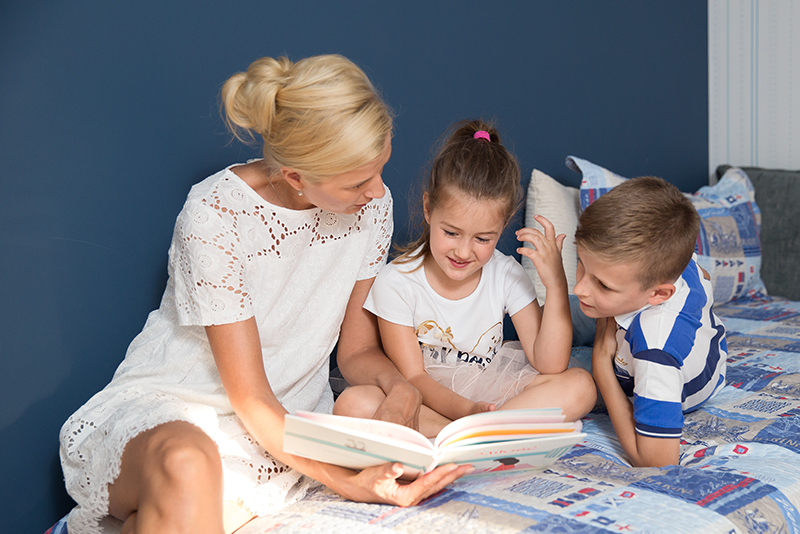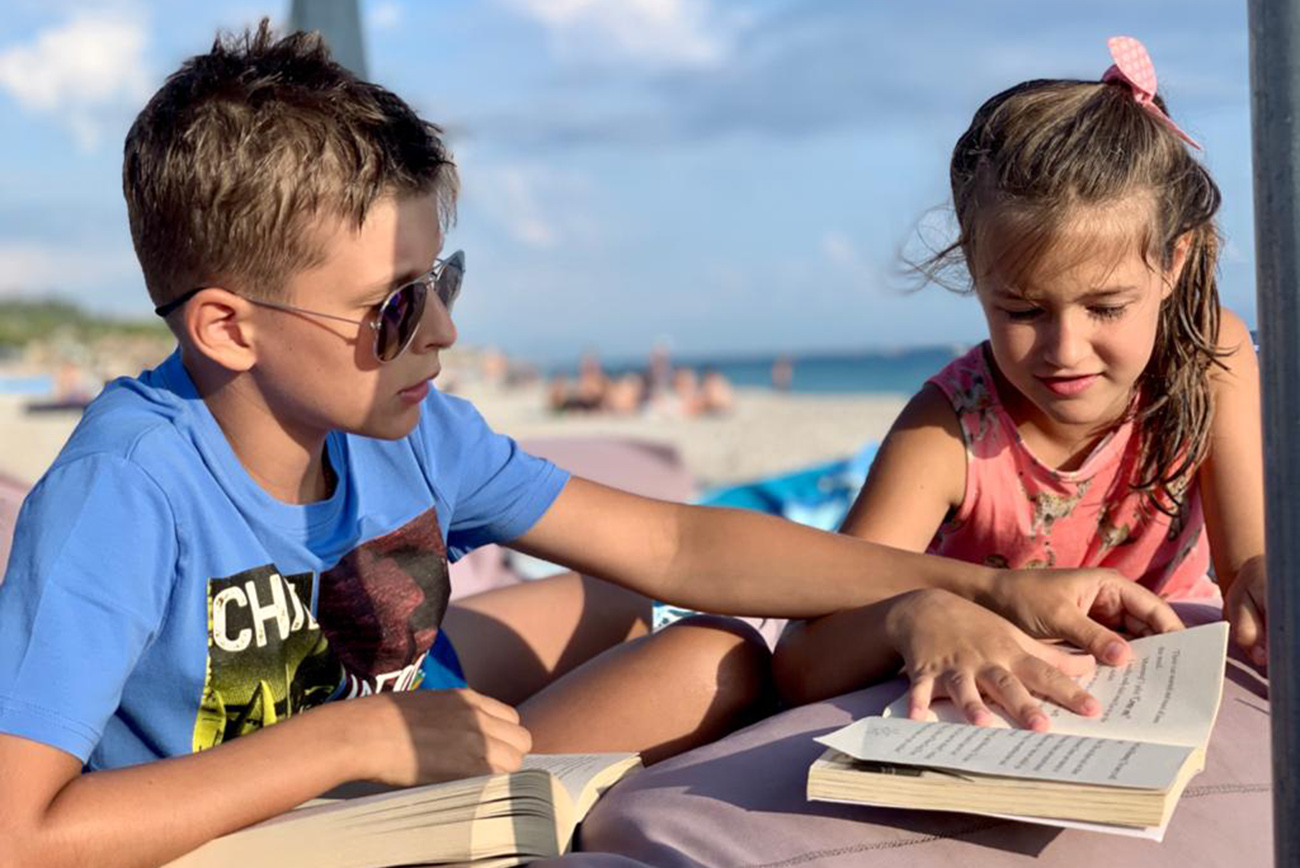As I wrote in my previous article (read here about it), there is a sensitive period for learning languages for children.
“A special mechanism exists for language. Not the possession of language in itself, but the possession of the mechanism which enables men to make languages of their own, is what distinguishes the human species. WORDS, therefore, are a kind of fabrication which the child produces, thanks to the machinery he finds at his disposal.” (Maria Montessori, The Absorbent Mind, 1967a/1995, p. 119).
I am Polish and my husband is Albanian (read here about my story). Right now, we live in Tirana, but we used to live in Italy and Poland for many years. My children can communicate in 4 languages: POLISH, ITALIAN, ALBANIAN AND ENGLISH: due to necessity or special needs of the moment, they naturally switch from one language to another.
It all begins in the mothers’ belly, when she intimately speaks to the baby in her womb. She must use her mother tongue that needs to be strong for any other languages to be acquired.
When the baby is born, she speaks to her and she observes her mouth. Sophisticated eye-tracking technologies have recently shown that 4-month-old look at the mouth; and by 12 months, the preponderance of their attention reverts to the eyes when the native language (but non-a nonnative) is spoken. (Lewkowicz&Hansen-Tift, 2012).
Infants’ sensitivity to the mouth region as they are learning language is speculated to help them see how to produce the sounds they need for language; note that this sensitivity is strongest when babbling proper begins around 8 months.
As soon as the baby is able to sit and focus, she will enjoy short periods spent on your lap looking at picture books and hearing you talk about what is on the page.
As she grows, read to her every day, not only at bedtime, but whenever you can.
They will take in additional languages without effort, although it does take some effort on the adult’s part to be successful.
If there is more than one language in the home, we can use the One Person One Language (OPOL) approach.
Each parent generally chooses their mother tongue to speak with the child and they agree on the “family language” which they will use between themselves.
My personal experience with languages in our home
In our family, I speak Polish with my children when we are alone. Their father speaks Albanian to them and we as parents, speak Italian to each other. At school, they learn and study in English. Actually, we use the OPOL approach with small deviances.
The children went to bilingual nursery where they were exposed to Albanian and English. Now they go to internationals schools where academically they are exposed to English. Moreover, my son has French lessons besides Albanian for one hour every day at school.
When grandma from Poland comes to visit us, they automatically switch to this language and we speak Polish at that times. When the other grandma is here with us, they naturally speak Albanian with her. What is funny, children are even translating conversations between two grandmas and find connection in all languages.
I must say that the language acquisition in our family went smoothly and without an extra effort from our side, besides the fact, that we must respect our own native language when speaking with children; that can be hard sometimes. The environment and languages there were exposed, made our children more attentive to the spoken language and being used to hear many languages from the birth, made them exercised and get used to it. As we all know, only the practice make perfect.

What you can do to teach your child new language?
- Keep talking
As you care for your infant or toddler, talk about what you are doing. This ties your action to language, and helps your child to develop an extensive vocabulary. Talk about what you see your child doing as it happens: “You must be thirsty, you are drinking so much today”. Speak clearly and be specific in what you say.
- Domains of Us
There is another approach called Domains of us. This is where we have agreed times or places when we use certain languages. For example, on the weekends the family chooses to speak English; Or out- of the home they choose to speak the local language and at home they speak the parents’ mother tongue.
- Look at the literacy goals for each of the child’s languages.
If the goal is to have the child be able to eventually study in a language, they need to spend around 30% of the week with this language. Calculate the hours the child is awake and see if it is necessary to increase their exposure in any language. For example, having a teenager to read and play with our child in that language, a babysitter who speaks that language, or a playgroup in that language.
- Be creative!
Some parents worry their child will have a language delay if they are being raised bilingual. When they have more than one language, the research shows that they should not have any learning delay. If we compare to 1,5-year-old who is monolingual, they may have 10 words. The bilingual child may have 5 words in one language and 5 words in another. So, it can appear to their language level is lower, even though they can say 10 words in total too.
See “Lexical Development in Bilingual Infants and Toddlers: Comparison to Monolingual Norms” by Barbara Pearson for more on this.
The research also does not support parents abandoning their mother tongue to encourage their children to pick up the local language. As I said before, the mother tongue that needs to be strong for any other languages to be acquired.
What we can do is to increase their exposure to the local language to ensure there is enough input.
I recommend “A Parents’ and Teachers’ Guide to Bilingualism” by Colin Baker for anyone with questions about bilingualism or learning more than one language.
I hope you had a good read.
See you soon!
Xxx
Joanna



